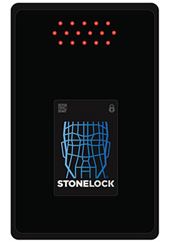26/05/2013
Axxonsoft releases Axxon Next version 3.1
Wiesbaden, Germany
Another novel feature for efficiency concerns the Camera Tampering and Failure Detection tools: only keyframes (H.264, MPEG) or frames downsampled at 2 fps (MJPEG) are decoded, not the entire video stream. This reduces the burden on the video server CPU and thus allows handling more video channels on a single server.
One of the latest innovations for effective surveillance is support for fisheye cameras and Immervision lenses. This function allows dewarping video from a fisheye camera or a camera with an Immervision panomorphic lens to obtain several "normal" flat images with different frame aspect ratios for display on the client screen. One of the resulting virtual cameras can be an ePTZ unit. This means that a single fisheye camera can replace several fixed cameras and a PTZ camera, for greater hardware cost savings. Dewarping is performed on the graphics card, without any additional burden on the CPU of the client computer. This allows viewing more video channels on a single client without increasing hardware requirements.
The new custom layout editing mode allows creating camera layouts of any arrangement on the screen. Viewing tiles can have varying aspect ratios as well. This is an efficient way of simultaneously fitting cameras on screen with aspect ratios of 3:4, 16:9, etc., and working with fisheye images.
Map immersion mode opens up new opportunities for viewing video. When enabled, this mode overlays a translucent video viewing tile on the map; fixed objects in the frame (furniture, doors, etc.) are combined with their depictions on the map. Immersion mood makes surveillance interactive and allows visually correlating the in-frame movement of objects with their movements in real space.
Autozoom helps to monitor moving objects by automatically adjusting the level of digital zoom. Autozoom shows close-in video for parts of the frame that contain a moving object (objects) and follows the object or objects as they move, just as a movie camera does when filming a close-up shot. The level of zoom is automatically adjusted to catch all moving objects in the frame. This function works with ordinary fixed cameras and fisheye cameras; in the latter case, autozoom acts as an ePTZ camera following the moving object.
The redesigned Automatic Rules Configuration interface offers a more convenient way of setting rules (scripts) for reacting to events. In addition, rules can now be set more flexibly: for example, if a detection tool on one camera is triggered, a rule can start recording on one or more other cameras. An unlimited number of reaction rules can be set for a single event. The new interface also offers a clearer view of which reaction rules have been set for a selected event.
Several new functions offer more robust archive features in Axxon Next. Exported video fragments and snapshots are now automatically digitally hashed. An included utility allows authenticating the digital hash watermark of previously exported video and snapshots. This pair of features allows verifying the authenticity of video exported from Axxon Next. You can now leave text comments for exported video; when the video is played back, the comments are shown as captions.
Automatic export of snapshots allows automatically saving snapshots of video in jpeg format to a selected folder when the snapshot feature is used during Live Video mode. Automatic snapshots are digitally hashed.
The new highlight in remote access is the availability of IOS and Android client apps. The apps can connect to VMS servers to view live video and archived video from cameras that are connected to the servers. The convenient scalable timeline allows quickly and easily pinpointing video of interest. The IOS client can be downloaded from the App Store and the Android client from Google Play.
A number of critical errors have been fixed in the updated web client. Stability has been greatly enhanced as well. Drivers Pack 3.2.16 with new drivers for IP devices is included with the release. Detailed information describing the purpose of the Drivers Pack, where to download it, and supported hardware is available on the company's web page.















